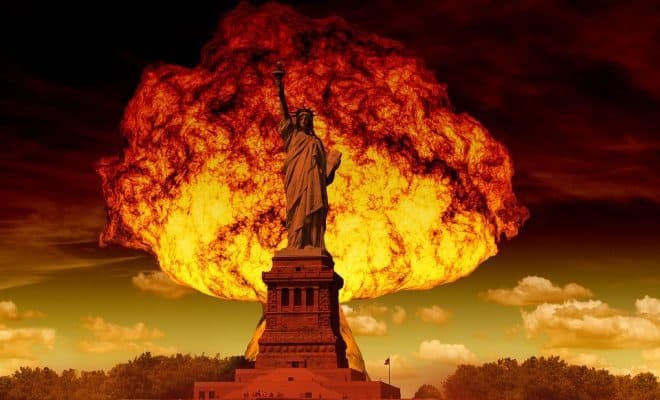How Serious Is Nuclear War?

Nuclear bombs can be fission bombs or thermonuclear bombs, and these weapons work by releasing large quantities of energy from small amounts of matter. Fission (atomic) bombs release energy equal to approximately 20,000 tons of dynamite, while thermonuclear (hydrogen) bombs release energy equivalent to about 10 million tons of dynamite. Nuclear weapons have only been used in war twice in the past, but in modern society we see the threat for nuclear war rising. These weapons of mass destruction can wipe out an entire city just from the initial blast, fire, and radiation that is released upon impact.
If we ever found ourselves in a nuclear war, it is important to understand just how deadly and far-reaching nuclear fallout is.
“The effects would be much greater than what we’re talking about with global warming and anything that’s happened in history with regards to volcanic eruptions.”
The United States is home to about 9,962 nuclear weapons, with 5,735 classified as deliverable. The largest nuclear bomb owned by the United States has the detonation power of 200 million pounds of high explosives; however it was Russia who detonated the Tsar Bomba, which had the power of over 50 megatons of TNT. Between the United States and Russia, we have thousands of nuclear warheads on high alert, meaning that they could be readied and launched within a matter of minutes. Currently, there are eight countries declared as nuclear states: the United States, Russia, the United Kingdom, France, China, India, Pakistan, and North Korea. Of the 30,000 nuclear warheads known to exist worldwide, 95% of those are owned by the United States and Russian.
A large-scale nuclear war could potentially put as much as 150 million tons of smoke into the Earth’s atmosphere, which would create a nuclear winter that would be colder than the Ice Age. Upon detonations, anywhere between 40-65 square miles of land would be destroyed instantaneously. The United States conducted more than one thousand nuclear tests from 1945 until 1992, and found that primary health consequences related to increased radiation exposure were cancer and birth defects.
Scientists believe that nuclear weapons are the single biggest threat to the Earth’s environment. Recent studies from UCLA argue that even a small-scale nuclear war would destroy the world’s climate and ecosystems, creating damage that would last for decades. An article published by The Guardian quoted Richard Turco of UCLA as saying, “Detonating between 50 and 100 bombs – just 0.03% of the world’s arsenal – would throw enough soot into the atmosphere to cause climactic anomalies unprecedented in human history. The effects would be much greater than what we’re talking about with global warming and anything that’s happened in history with regards to volcanic eruptions.” Further research shows that tens of millions of people would die, temperatures would drop significantly, the world’s soil would be unable to bear crops, and the ozone layer, which protects us from ultraviolet radiation would be depleted by 40-70% depending on how close you are to the Earth’s poles. Not only would a nuclear war essentially halt life as we know it, the effects on the environment could potentially be catastrophic.









